Getting a tattoo is an exciting and meaningful way to express yourself, but it’s important to think carefully about where you choose to put your artwork. While there are some general consensus on where not to get a tattoo, you should consider all the risks and consequences before getting inked. This article will discuss five of the most common places where you should avoid getting a tattoo. We will cover why these areas are not ideal and what to consider before getting a tattoo in any of these locations.
Contents
Reasons for Not Getting a Tattoo in Certain Places
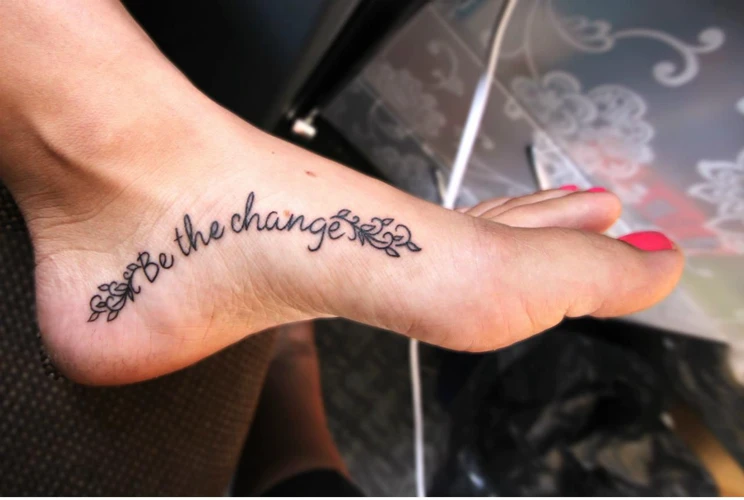
| Body Part | Reasons |
|---|---|
| Face | Tattoos on face are very visible and may be difficult to cover up for job interviews. They can also be costly to remove. |
| Neck | Tattoos on the neck can be very obvious and can be seen as unprofessional for most job interviews. |
| Hands | Tattoos on the hands are also very visible, and can be quite painful to get. They can also be difficult to cover up. |
| Feet | Tattoos on the feet are very painful to get and can be very difficult to cover up and hide. They can also be difficult to keep clean and can cause infection. |
| Genitals | Tattoos on the genital area are extremely painful and have a high risk of infection. They may also be considered socially unacceptable. |
Tattoos are a popular form of self-expression, but there are certain places on the body where it is not advisable to get a tattoo. Places like the face, neck, hands, feet, and genitals can be very sensitive and can be more prone to infection and pain. In addition, tattoos in these areas can be more visible and may not be appropriate for professional settings. For these reasons, it is best to avoid getting a tattoo in these areas.
Face
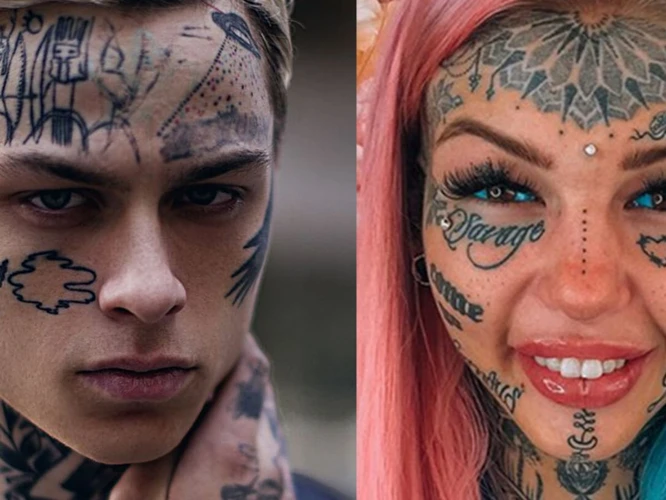
- Forehead: The forehead is usually exposed and can be difficult to cover up with hair or other clothing. It is also a very visible part of your body, so any mistakes or fading of the tattoo will be very noticeable.
- Cheeks: The cheeks are another visible part of the face, so any mistakes or fading of the tattoo will be very noticeable. Furthermore, they can be difficult to cover up, especially if the tattoo is large.
- Eyebrows: Getting a tattoo on your eyebrows can be risky as it can easily look unnatural. Additionally, it can also be difficult to cover up and mistakes or fading may be very noticeable.
- Lips: Lip tattoos can be difficult to keep looking good over time, as the skin on the lips is very thin and delicate. Furthermore, it can be difficult to cover up if you don’t like it.
- Chin: The chin is another visible part of the face that can be difficult to cover up. In addition, it can be easy to make mistakes when tattooing the chin, which can be difficult to remove or cover up.
Hands
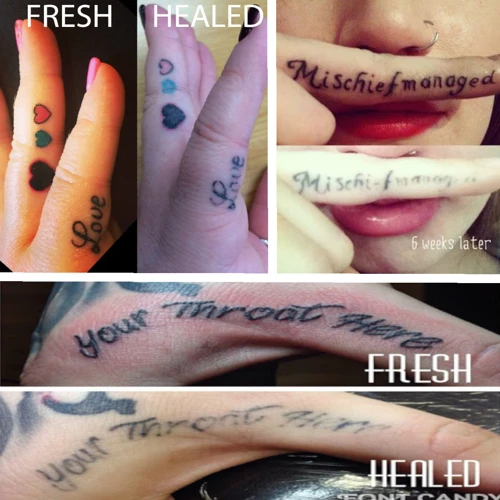
| Pros: | Unique, eye-catching placement. |
| Cons: | Highly visible, difficult to hide, may limit career opportunities. |
Tattoos on hands are highly visible, and difficult to hide, even with makeup or clothing. Depending on the nature of the tattoo and the culture of the workplace, they may limit career opportunities. As such, if you are considering a tattoo on your hands, it is important to think it through thoroughly, and be aware of the potential implications. On the other hand, tattoos on the hands can be eye-catching and unique.
Neck

Getting a tattoo on the neck can be very visible and difficult to cover up. Any job that requires a professional appearance is likely to restrict neck tattoos, and in some cases, they may be considered offensive. Tattoos on the neck can also be particularly painful due to the thin skin and lack of fat. Furthermore, they can be more prone to infection due to their location. For these reasons, it is best to avoid getting a tattoo on the neck.
Feet

| Pros | Cons |
|---|---|
| Easy to cover | Painful |
| Private area | Easily infected |
Feet are not a recommended place to get a tattoo. Even though they are easy to cover, they are one of the most painful places to be tattooed. Plus, they are in a private area and can easily become infected.
Groin

| Pros | N/A |
| Cons | Painful, difficult to cover, difficult to maintain hygiene, high risk of infection. |
The groin area is one of the most sensitive areas of the body, with thin skin and close proximity to sensitive organs, making it a very painful spot for a tattoo. It is also difficult to cover up, difficult to maintain proper hygiene and at a high risk of infection. For these reasons, getting a tattoo in the groin area should be avoided.
Alternatives to Getting a Tattoo
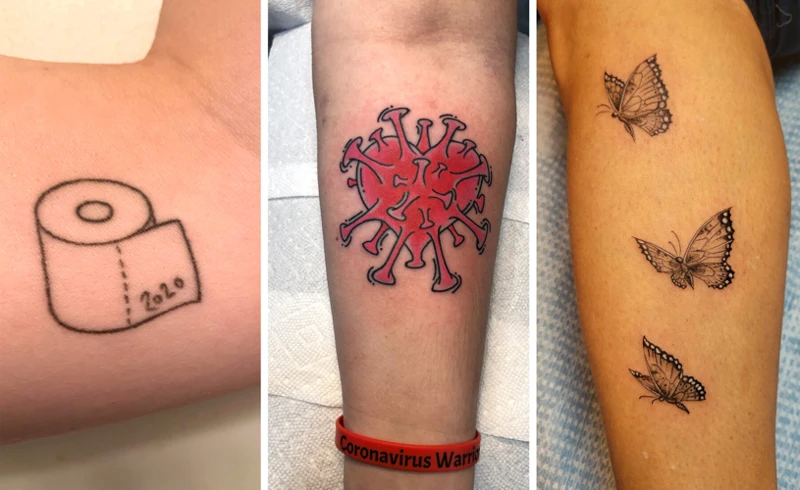
| Alternative | Description |
|---|---|
| Temporary tattoos | Temporary tattoos provide the look of a real tattoo without the commitment. These tattoos are applied with water and wash off after several days. |
| Henna tattoos | Henna tattoos are a temporary ink made of plant-derived dye. These tattoos usually last between one and three weeks. |
| Jewelry | Wearing jewelry can provide an aesthetic similar to a tattoo. Earrings, rings, and body jewelry can be used to decorate the body with a variety of designs. |
| Tattoo stickers | Tattoo stickers are adhesive decals that look like real tattoos. These stickers can be placed on the skin and removed when desired. |
| Body painting | Body painting is a form of art that uses paint to temporarily adorn the body. It is often used for special events and occasions. |
Temporary Tattoos
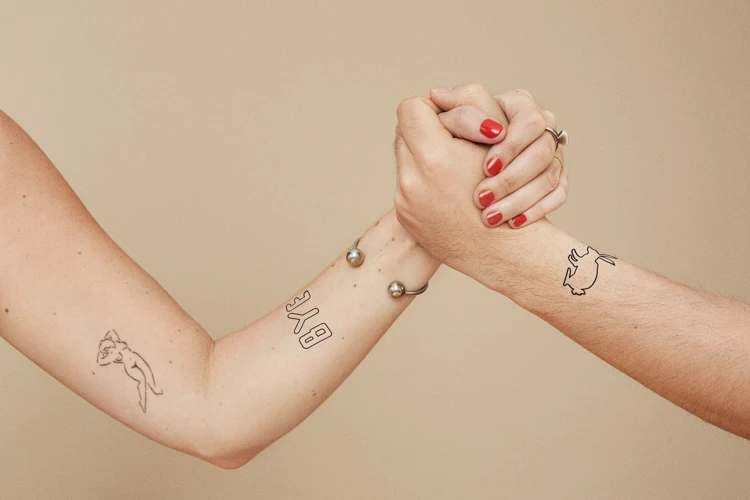
- Skin Sensitivity: Temporary tattoos can cause skin sensitivity and irritation, especially when applied to sensitive areas like the face, neck, or chest.
- Ink Quality: The quality of inks used in temporary tattoos can vary greatly, and some may contain toxic or allergenic ingredients.
- Infection Risk: If not applied properly, temporary tattoos can increase your risk of infection, especially if they are not cleaned properly.
- Fading: Temporary tattoos fade over time, and can be difficult to remove or cover up.
- Reaction Risk: Some people may experience an allergic reaction to temporary tattoos, which can cause redness, itching, and swelling.
Temporary tattoos are not recommended for use in any area of the body where skin sensitivity is a concern, as they can cause irritation and allergic reactions. Additionally, the quality of inks used in temporary tattoos can vary greatly, and may contain toxic or allergenic ingredients. Improper application of temporary tattoos can also increase the risk of infection, and the tattoos may fade over time, making them difficult to cover up or remove. For these reasons, it is best to avoid getting temporary tattoos on the face, neck, or chest.
Henna Tattoos
- The risk of skin reactions: Henna tattoos, which are made from a dye derived from the henna plant, can cause skin irritations, rashes, and raised red bumps. The dye can also stain the skin for several weeks and cause discomfort.
- Infections: Poorly sterilized needles and contaminated henna paste can lead to skin infections, such as bacterial and fungal. In some cases, people may experience an allergic reaction, even from natural ingredients.
- The design cannot be changed: Unlike other tattoos, henna tattoos cannot be changed or removed easily. It is difficult to undo the design once it is applied.
- They are not permanent: Henna tattoos tend to fade away in 1-2 weeks, regardless of the design. This means that the design will be lost quickly, and the person will have to get the tattoo again.
When deciding where not to get a tattoo, henna tattoos should be avoided. Henna tattoos are generally not permanent and can cause skin irritations and infections. Additionally, the design cannot be changed or removed once it is applied.
Frequently Asked Questions
What are the potential risks of getting a tattoo in an unprofessional shop?
- Infection: Unprofessional shops often lack the proper sterilization techniques, which can lead to higher risks of infection, including hepatitis, HIV, and staph infections.
- Unprofessional artists: Unprofessional artists may have little to no experience, leaving you with a poor-quality tattoo.
- Unsafe equipment: Unprofessional shops may use outdated or inferior equipment, meaning that the needles, ink, and other supplies are of questionable quality and may even be contaminated.
- Unregulated practices: Unprofessional shops may not follow safety and hygiene regulations, leaving you exposed to a variety of health risks.
- Lack of aftercare advice: Unprofessional shops may not provide you with any advice on how to care for your new tattoo.
What are the Potential Health Risks of Getting a Tattoo in an Unprofessional Shop?
Getting a tattoo from an unprofessional shop can put you at risk of infection, allergic reactions, or an improperly done tattoo. Infection can result from contaminated needles, ink, or unsanitary work surfaces. Allergic reactions can be caused by the ink or by the dyes used to create the tattoo. An improperly done tattoo can lead to scarring, blurred lines, or fading of the tattoo. Additionally, some unprofessional shops may not be licensed or regulated by the local government, meaning they may not be held to the same safety and health standards.
What are the Signs of a Reputable and Professional Tattoo Shop?
- Certified Professionals: The tattoo artist should be a certified professional with a license and insurance.
- Cleanliness: The shop should be clean, tidy, and well-maintained with all the necessary sanitation measures in place.
- Sterilized Equipment: All equipment should be sterile and disposable, and not reused on multiple customers.
- Positive Reviews: The shop should have a good reputation with positive reviews from customers.
- Original Artwork: The tattoo artist should produce original artwork with creativity and skill.
How Can I Best Prepare Myself for Getting a Tattoo?
Research the tattoo artist you want to work with, read reviews and check out their portfolio. Make sure you are comfortable with the style and quality of their work. Talk to the artist before your appointment and let them know what you want. Prepare to stay for the full length of the appointment and make sure you eat and drink beforehand. Be sure to get enough rest the night before and do not drink alcohol the day of. Wear comfortable clothing that allows easy access to the area of your body where you want the tattoo. Finally, make sure you have a plan for taking care of the tattooed area and following the artist’s aftercare instructions.
What are the best ways to ensure a successful tattoo experience?
- Choose a Professional Tattoo Artist: Research tattoo artists near you and read customer reviews. Visit the shop and talk to the artist before you get inked.
- Prepare Yourself: Tattooing is a process and you should be mentally and physically prepared for the experience. Take care of yourself and have a healthy meal before your appointment.
- Have a Clear Idea: Finalize your design and discuss it with your artist. Show references and be open to the artist’s suggestions.
- Take Care of the Tattoo: Follow the aftercare instructions given by the artist. Keep the tattoo clean and moisturized until it is completely healed.
Conclusion
Tattoos are a great way to express yourself and make a statement. However, it’s important to be aware of the places that you shouldn’t get a tattoo. These include the neck, face, hands, feet, and genital areas. Consider all of these factors before getting a tattoo and make an informed decision.